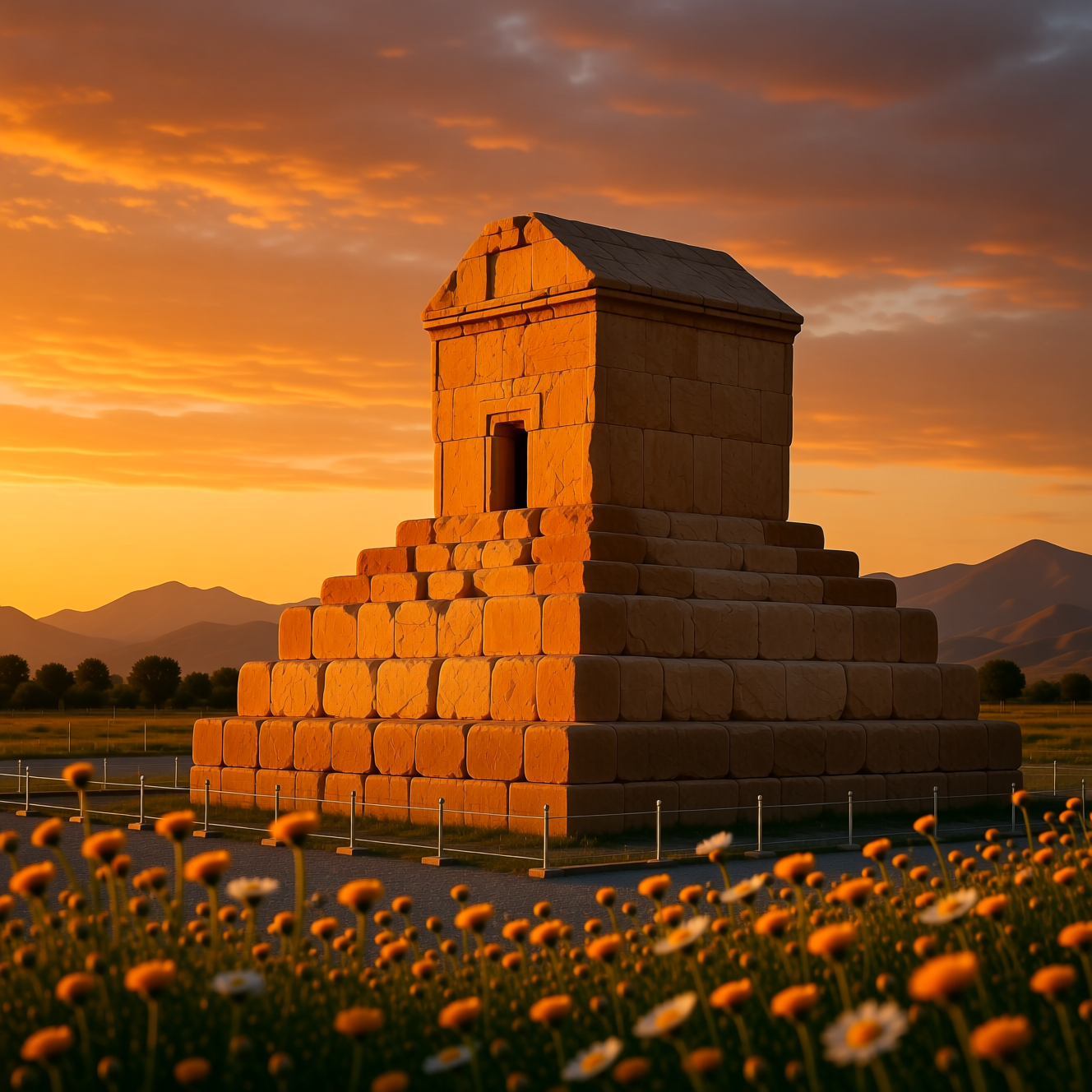Pasargadae, an ancient city in Fars Province, was the first capital of the Achaemenid Empire and is home to the tomb of Cyrus the Great. This historical complex was built in 550 BC, by order of Cyrus, as the political and cultural center of the empire, and is now a UNESCO World Heritage Site.
Construction History
The Mausoleum of Cyrus was built in an open plain, with a simple but magnificent architecture. Its structure is made of white limestone, in two parts: a six-story stepped platform and a small rectangular chamber above it. This design was not just a burial place for a king, but a statement of Cyrus's philosophy of life; simplicity, reliability and respect for nature.
Architecture and Features
Sturdy structure: the stones are placed together without mortar and with precise joints.
The orientation of the building: facing the rising sun, a symbol of beginnings and light.
Dimensions: The overall height of the tomb is about 11 meters, with a small chamber measuring 3.1 meters long and 2.1 meters wide.
Pasargadae as the capital
In addition to the tomb of Cyrus, the city of Pasargadae included royal palaces, royal gardens, and religious sites. The garden system and irrigation canals of this city are considered an early example of a Persian garden.
Spiritual and cultural significance
Cyrus the Great is known as a symbol of justice and freedom in history. His Charter of Human Rights (Cyrus Cylinder) expressed respect for the beliefs and cultures of different nations. His tomb is still a place of pilgrimage and respect for Iranians and foreign tourists.
Nearby attractions
Baram Palace with its huge stone columns.
Cyrus' private palace with exquisite stone floors.
The entrance gate of Pasargadae, which was once used by kings and special guests.
The natural landscape of the Murghab Plain, which has doubled the peaceful and majestic atmosphere of the site.
Conservation Status
In recent years, several restoration projects have been implemented to prevent erosion of the rocks. However, threats such as land subsidence and climate change still exist.




